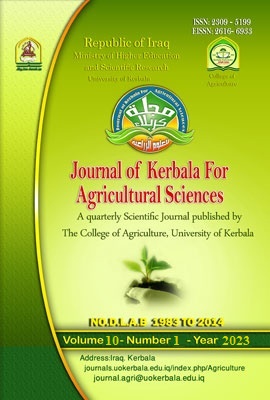Investigation of hepatoprotective effect of aqueous extract of calliste-mon viminalis (AECV) in paracetamol-induced liver toxicity in male rats
DOI:
https://doi.org/10.59658/jkas.v10i3.1117Keywords:
Aqueous extract of Callistemon viminalis, Hepatoprotective activity, Hepatotoxicity, Paracetamol, liver enzymesAbstract
The current study was performed to investigate the hepatoprotective potential of Callistemon viminalis (AECV) on paracetamol –induced liver damage in male rats. Twenty-four male Wister rats (150–200 gm) were divided into 4 groups (6 animals each). Paracetamol was given at a dose of 2g/kg once daily for one week to induce liver injury, while AECV was administered via oral gavage at a dose of 200mg/kg B.W. for 4 weeks. Silymarin was given orally as reference hepatoprotective drug at a dose of 100mg/kg B.W. Liver enzymes such as ALT, AST, ALP, and total bilirubin were used to determine the level of hepatic injury recovery. SOD and CAT were measured as antioxidant enzymes. Both AECV and silymarin were successful in preventing the liver damage caused by paracetamol in male rats. The extract's hepatoprotective properties were demonstrated by a significant decrease in the blood enzymes ALT, AST, ALP, and TB and an increase in the antioxidant enzymes SOD and CAT.
Downloads
Published
How to Cite
Issue
Section
License
Copyright (c) 2023 Copyright (c) 2024 is the Author's article. Published by the Journal of Kerbala for Agricultural Sciences under a CC BY 4.0 license

This work is licensed under a Creative Commons Attribution 4.0 International License.
Licensing Terms
All articles are published under a Creative Commons License and will be directed to the Creative Commons Attribution 4.0 International License (CC BY 4.0) That permits use, distribution, and reproduction in any medium, provided the original work is properly cited. This license also allows the work to be used for commercial purposes.
Use by both non-commercial and commercial users
This content is licensed under a Creative Commons Attribution 4.0 International (CC BY 4.0) license, permitting use by both non-commercial and commercial users. Individual users may access, download, copy, display, and redistribute the articles to colleagues, as well as adapt, translate, and text- and data-mine the content, subject to the following conditions:
- The author's moral rights, including the right of attribution and the right to protect their work from derogatory treatment, are respected.
- Where content in the article is identified as belonging to a third party, users must ensure that any reuse complies with the copyright policies of the owner of that content.
- If the article content is reused for research or educational purposes, users should maintain a link to the appropriate bibliographic citation, including the DOI and a link to the published version on the journal's website.






